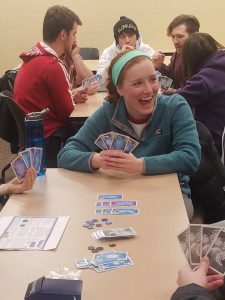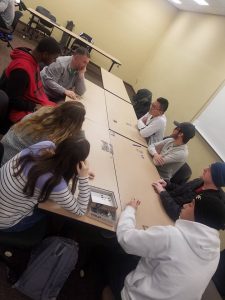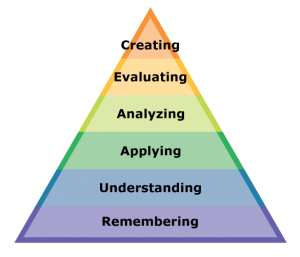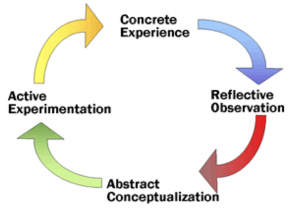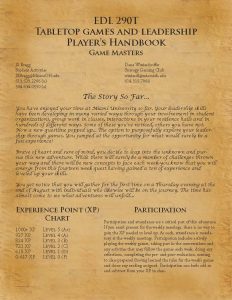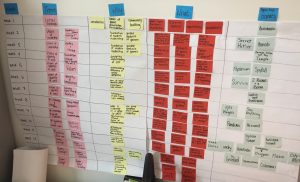One of the most innovative pieces of this course is the fact that students largely decide their own assignments, and as such, grades. The only assignment that is a required part of the course is the final game submission. Altogether there is approximately 40 different assignments for students to chose from to self-design their learning outside of the classroom.
We did make minor adjustments to the grading scale between the first and second offering of the course based on student and instructor feedback. This is the current grading scale which the course syllabus refers to as the Experience Point (XP) Chart:
776+ XP Level 5 (A+ 97%)
720 XP Level 4 (A 90%)
640 XP Level 3 (B 80%)
560 XP Level 2 (C 70%)
480 XP Level 1 (D 60%)
0-479 XP Level 0 (F 59% and below)
The assignments range from 10 point weekly reflections (some of which you can read on the blog) to 150 point escape room designs. The assignments were created to balance learning within game design and leadership topics. This allows students to lean more towards one topic than another, but requires dabbling in both to reach the 5th Level.
But, wait… do students actually do the assignments if they’re not actually *gulp* assigned?
We had a relatively even curve of the grades ranging between Level 0 to Level 5+ last semester. Similar to last semester, however, a majority of the students have waited until the middle to end of the semester to submit the larger assignments. As of our week 10 of the 14 week semester (15 weeks if finals week is included), these are our current experience point standings:
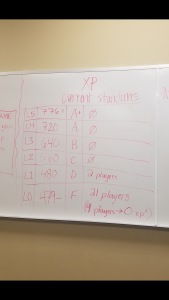
Current Experience Point Standings: 2 players at level 1 (D), 21 players at level 0 (F), and 9 players not yet started.
Many of our students have been submitting weekly reflections as well as working on other projects, but the submission process seems to take a bit longer. At a week after this picture was taken, we have seen a significant uptick of submissions and movement in the levels. We put this data on the board for the class to inspire the feeling of playing a game with the grades. As someone who loves data, I would love to gain insight from the students as to why they wait so long to submit the assignments… but I suppose that is a research topic for another day!
Something to also keep in mind is that the final is worth up to 200 points if full points are awarded. The students have 1 week to discuss their game idea and get feedback from the entire class, then the next week is devoted to play testing their game in class. This is then followed by a class period discussing and defending their final game submission where a final grade on the project is assigned. This gives the students time to take the feedback, think about it, and choose whether or not to implement it before they present their final project.
We are so excited to see how much the students have grown this semester through their final presentations, play tests, and and defenses. Many of them will be presenting their final projects and other assignments they have completed throughout the semester at the expo on May 11th from 1-2:30pm in McGuffey 322!


